Common Poppy: Grow & Care for Papaver Rhoeas
Written by Iris
Aug 03 2021
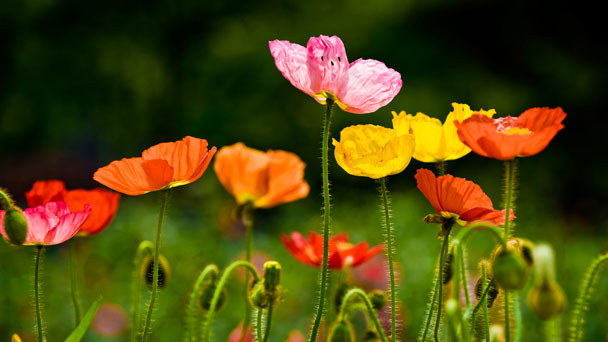
The poppy - poppy, red poppy or corn poppy - is an annual herb of the poppy family, known as an agricultural weed. It is an erect annual plant, about 70 cm tall, with a single stem, large and showy, and flowers 5 to 10 cm long with four petals, usually bright red, most commonly with a black spot at the base. Not all commercial poppies have red flowers. Selective breeding has produced yellow, orange, pink and white varieties, with the Shirley poppy perhaps the best known variety.
If you have ordered seedlings, make sure you acclimatise them to outdoor conditions before you plant them out. Soak the plants well and then plant out in the border or cutting garden, leaving 20-30cm between plants. Water in well to settle the roots, and only water again in very dry conditions or if you have decided to plant them in containers.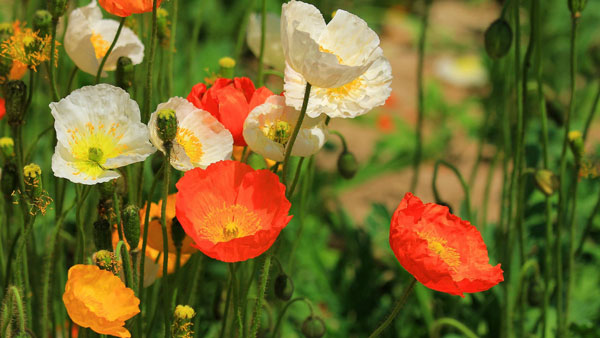
Poppies are not picky with their potting mix as long as their needs are met. Again, choose soil that drains easily. Some Poppies, like California Poppies, can even thrive in dry sidewalk cracks.
Aim to water your poppy with at least 1-inch of water weekly, allowing your plant to dry in between watering. It is good practice to water deeply but infrequently rather than giving Poppy small sips of water every day, as this may lead to root rot.
Take note that Poppies planted in pots dry out faster than those grown in soil. If your poppies are placed in containers, the plant may need to be watered more than usual.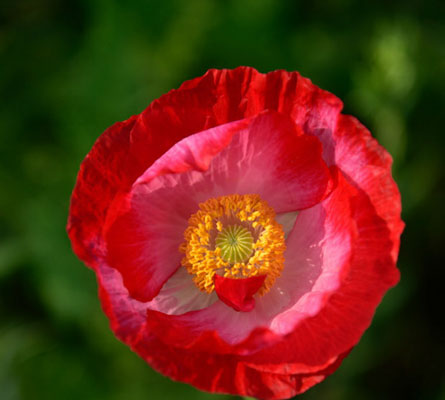
If compost or manure is not available, slow-release fertilizer with balanced Nitrogen, Phosphorus, and Potassium (NPK) ratios (ex. 14-14-14) can be placed in the soil before planting so that the plant can receive consistent nutrients to grow.
If using a liquid fertilizer, poppies only need a single application of a high phosphorus fertilizer during their flowering period from June to August, to encourage strong and healthy blooms. Fertilizers with higher Nitrogen ratios (ex. 20-10-10) produce more leaves rather than flowers, so avoid them.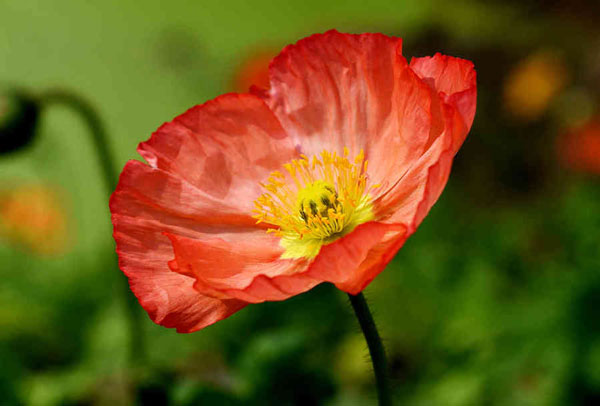
Papaver rhoeas Shirley ‘Amazing Grey’
Papaver rhoeas Shirley ‘Mother of Pearl’
Papaver rhoeas Shirley ‘Angels Choir’
Papaver rhoeas Shirley ‘Fairy Wings’
Papaver rhoeas Shirley ‘Falling in Love’
Papaver rhoeas Shirley ‘Pandora’
Papaver rhoeas Shirley ‘Double Mixed’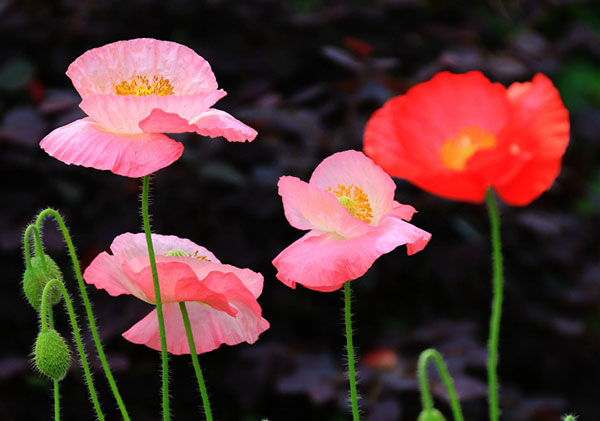
How to Grow Common Poppy (Papaver Rhoeas)How to Care for Common Poppy (Papaver Rhoeas)Varieties of Common Poppy (Papaver Rhoeas)Common Poppy (Papaver Rhoeas) FAQ
How to Grow Common Poppy (Papaver Rhoeas)
Steps for Common Poppy (Papaver Rhoeas) Propagation with Seeds
If you start them off from seed, they are usually best sown direct where you want them to grow as they tend to resent root disturbance. So, find a sunny spot with fairly indifferent soil, scratch the surface in spring or autumn and sprinkle the seed on top, raking in gently to settle them in. You can also sow under cover a little earlier and then transplant to their final position once the risk of frost has passed.If you have ordered seedlings, make sure you acclimatise them to outdoor conditions before you plant them out. Soak the plants well and then plant out in the border or cutting garden, leaving 20-30cm between plants. Water in well to settle the roots, and only water again in very dry conditions or if you have decided to plant them in containers.

How to Care for Common Poppy (Papaver Rhoeas)
Light
The common poppy prefers full sun conditions with at least 6 hours of direct sunlight. If necessary the common poppy can also adapt to partial shade where it receives less than 6 hours of sun, but the growth will not be as vigorous and bloom time may be reduced.Soil
One of the most important aspects of attending to Poppies is to grow them in their preferred type of soil. Almost all poppy varieties prefer well-draining soil. Soil with a mixture of both sand and loam will allow water to drain faster while reaching all the roots of the plant.Poppies are not picky with their potting mix as long as their needs are met. Again, choose soil that drains easily. Some Poppies, like California Poppies, can even thrive in dry sidewalk cracks.
Water
During the seedling stage, keep the soil of your poppy plants moist, and water only when the top of the soil dries out. Once the plant is about 1-2 months old, the plant's stem can store more water and becomes drought-tolerant.Aim to water your poppy with at least 1-inch of water weekly, allowing your plant to dry in between watering. It is good practice to water deeply but infrequently rather than giving Poppy small sips of water every day, as this may lead to root rot.
Take note that Poppies planted in pots dry out faster than those grown in soil. If your poppies are placed in containers, the plant may need to be watered more than usual.
Temperature and Humidity
The common poppy is an annual wildflower that grows well in USDA zones 1-10. While the plants and flowers themselves are not frost-tolerant, their seeds can withstand cold winters and germination occurs in soil temperatures that are between 50 to 60 degrees Fahrenheit.
Fertilizer
Common Poppy (Papaver Rhoeas) do not need extra nutrients to grow and bloom. However, adding compost or manure into the soil before planting can produce healthier stems and foliage throughout the season.If compost or manure is not available, slow-release fertilizer with balanced Nitrogen, Phosphorus, and Potassium (NPK) ratios (ex. 14-14-14) can be placed in the soil before planting so that the plant can receive consistent nutrients to grow.
If using a liquid fertilizer, poppies only need a single application of a high phosphorus fertilizer during their flowering period from June to August, to encourage strong and healthy blooms. Fertilizers with higher Nitrogen ratios (ex. 20-10-10) produce more leaves rather than flowers, so avoid them.
Pests and Diseases
Most of the annual poppies are pretty trouble free, but there are some pests and diseases that can attack, particularly the perennial oriental poppies.- aphids
- downy mildew
- powdery mildew
- pedicel necrosis

Varieties of Common Poppy (Papaver Rhoeas)
There are several cultivators of the common poppy that are collectively known as the ‘Shirley poppy'. Through selective breeding and hybridization, Shirley poppies are available in colors ranging from pale pink, to white, to red, to blue, and many others. Some of the most popular and commonly grown varieties in the United States include:Papaver rhoeas Shirley ‘Amazing Grey’
Papaver rhoeas Shirley ‘Mother of Pearl’
Papaver rhoeas Shirley ‘Angels Choir’
Papaver rhoeas Shirley ‘Fairy Wings’
Papaver rhoeas Shirley ‘Falling in Love’
Papaver rhoeas Shirley ‘Pandora’
Papaver rhoeas Shirley ‘Double Mixed’

Common Poppy (Papaver Rhoeas) FAQ
How tall do Papaver rhoeas grow?
Papaver rhoeas is known by a variety of common names including Flanders poppy, corn poppy, field poppy or common poppy. It is an annual poppy that typically grows to 9-18cm tall.Is Papaver rhoeas poisonous?
Papaver rhoeas is toxic to mammals, though the toxicity is low. The seed is not toxic.What is Papaver rhoeas used for?
Papaver rhoeas is found in Iran and other countries of the world. It is used for treating diarrhea, cough, and sleep disorders and for analgesia-sedation purposes. It is also used for reducing opioid abstinence symptoms.
Latest Updated
- Benefits of Bugleweed - 7 Science-backed Health Benefits
- Bugleweed Dangers & Side Effects - Is It Poisonous?
- How to Plant Evergreen Trees - What You Should Know
- When to Plant Evergreens - Grow Guide for Evergreen Trees
- 12 Wonderful Evergreen Shrubs for Your Garden
- 12 Popular Evergreen Plants with Pictures for Beginners
- When And How To Prune A Lilac Bush Like a Pro
- How to Grow & Care for Lilac Vine (Hardenbergia Violacea)
- Japanese Lilac Tree (Syringa Reticulata) Care & Propagation Guide
- Shumard Oak Pros and Cons - What to Know
Popular Articles
- Winter maintenance of Antirrhinum Majus
- How to Grow Terminalia Mantaly Tree
- How to Grow and Care for Crossostephium Chinense
- How to grow Antirrhinum Majus in spring
- Peristeria Elata (Dove Orchid) Profile: Info & Care Guide
- Underwatered Snake Plant (Sansevieria Trifasciata) - Signs And How To Fix
- How to Care for Brazilian Jasmine Plant (Mandevilla Sanderi)
- How to Grow & Care for Graptopetalum Purple Delight in Summer
- Rosa Chinensis (China Rose): Plant Growing & Care Tips
- How to Care for Baby Sun Rose (Aptenia Cordifolia)